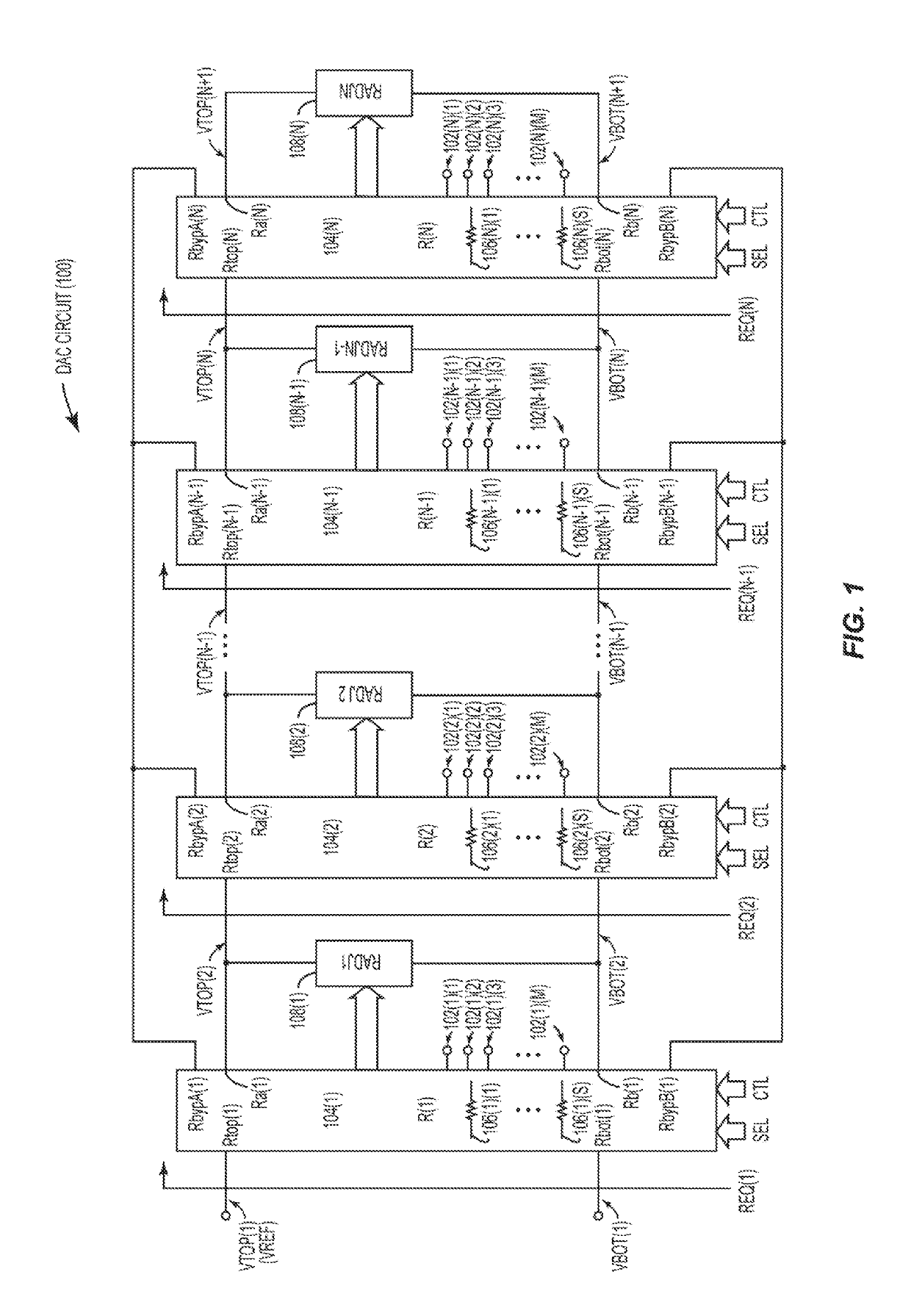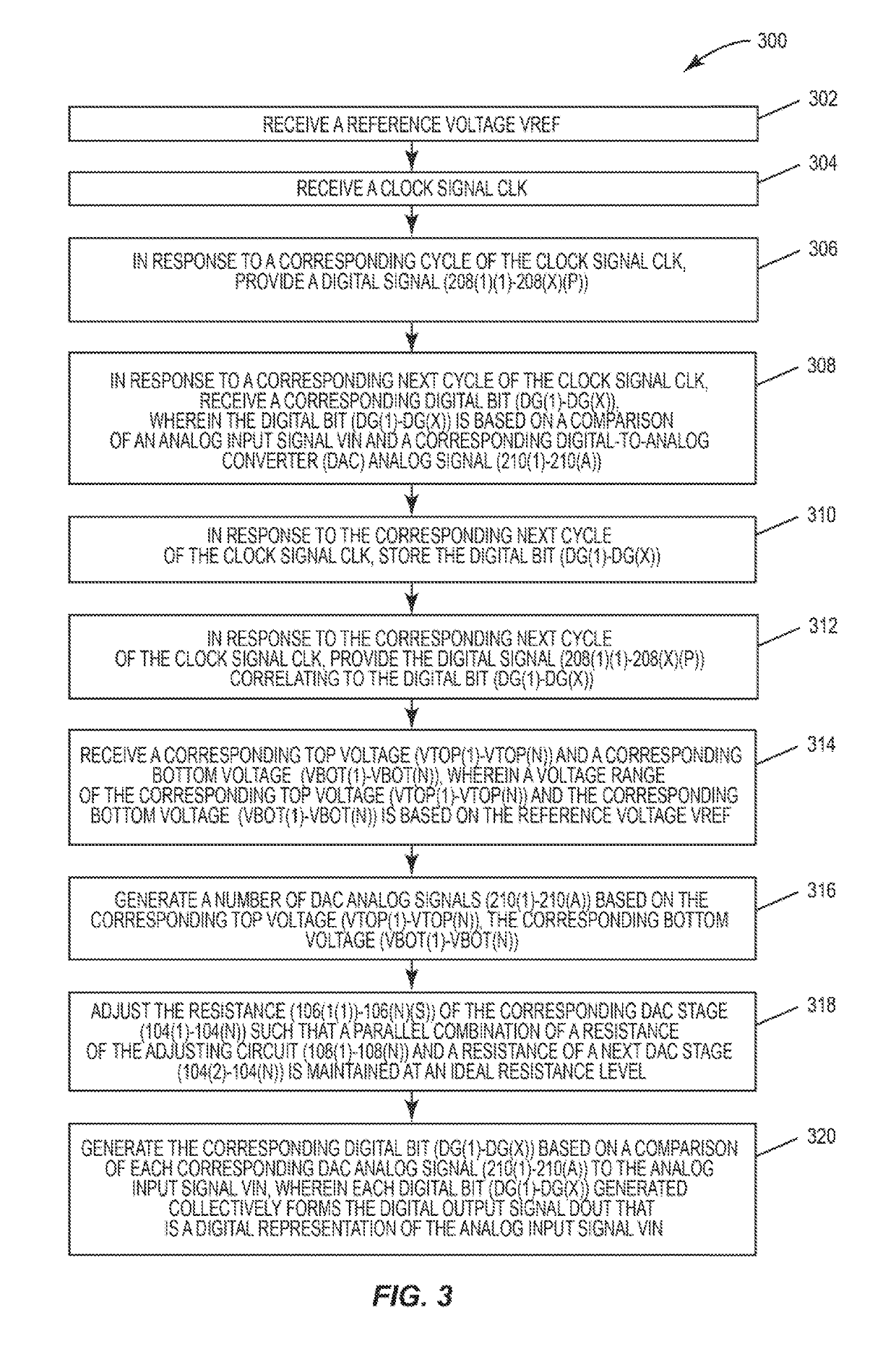Digital-to-analog converter (DAC) circuits employing resistor rotator circuits configured to be included in analog-to-digital converter (ADC) circuits
- Summary
- Abstract
- Description
- Claims
- Application Information
AI Technical Summary
Benefits of technology
Problems solved by technology
Method used
Image
Examples
Embodiment Construction
[0041]With reference now to the drawing figures, several exemplary aspects of the present disclosure are described. The word “exemplary” is used herein to mean “serving as an example, instance, or illustration.” Any aspect described herein as “exemplary” is not necessarily to be construed as preferred or advantageous over other aspects.
[0042]Aspects disclosed in the detailed description include digital-to-analog converter (DAC) circuits employing resistor rotator circuits configured to be included in analog-to-digital converter (ADC) circuits. In one aspect, a DAC circuit includes multiple DAC stages, each of which may be configured to generate one or more DAC analog signals corresponding to a selected resistance of the DAC stage. In particular, each DAC stage is configured to receive a corresponding top voltage and a corresponding bottom voltage. Each DAC stage is configured to generate a number of DAC analog signals based on the corresponding top voltage and the corresponding bott...
PUM
 Login to View More
Login to View More Abstract
Description
Claims
Application Information
 Login to View More
Login to View More - R&D
- Intellectual Property
- Life Sciences
- Materials
- Tech Scout
- Unparalleled Data Quality
- Higher Quality Content
- 60% Fewer Hallucinations
Browse by: Latest US Patents, China's latest patents, Technical Efficacy Thesaurus, Application Domain, Technology Topic, Popular Technical Reports.
© 2025 PatSnap. All rights reserved.Legal|Privacy policy|Modern Slavery Act Transparency Statement|Sitemap|About US| Contact US: help@patsnap.com



